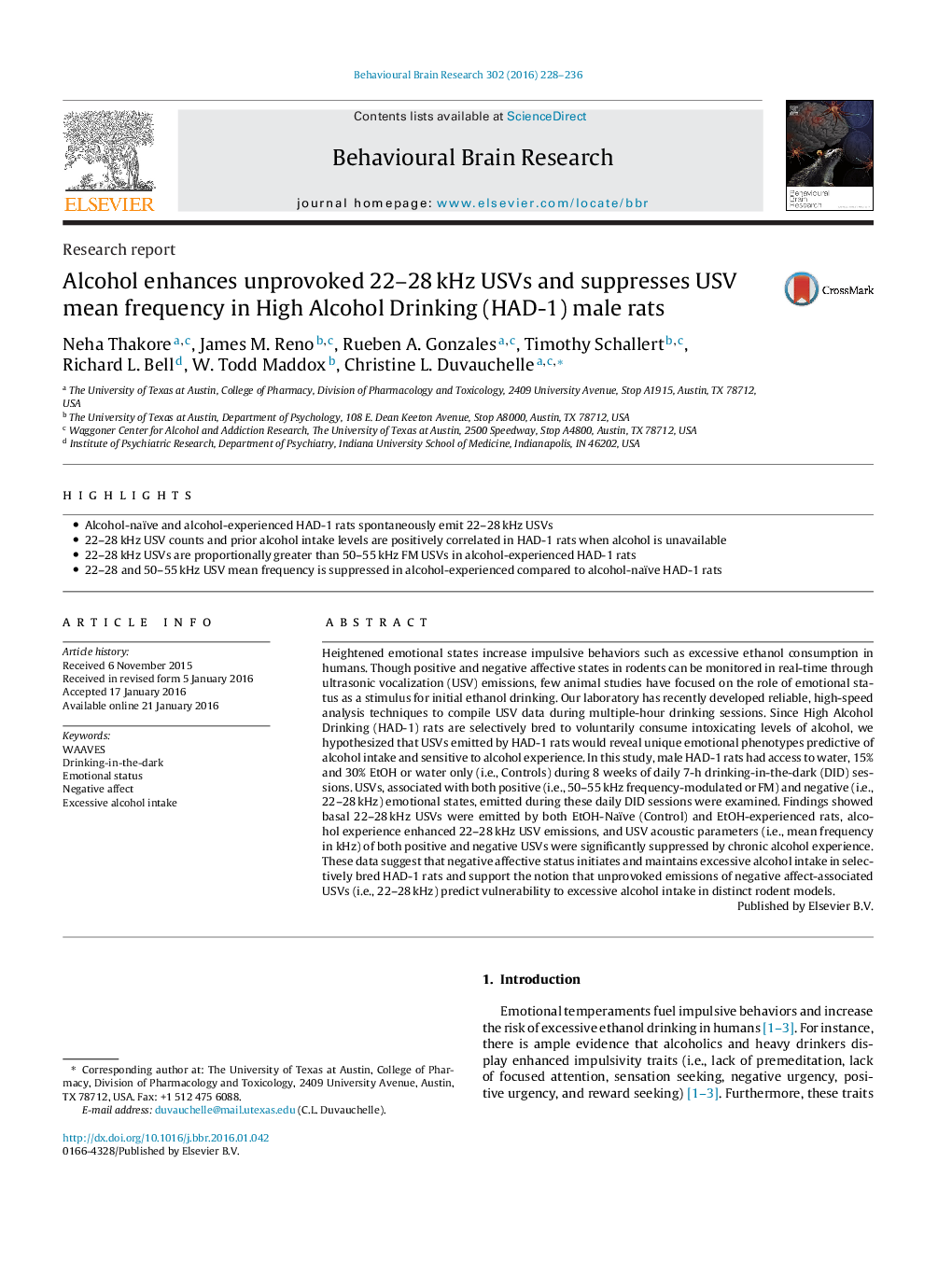| Article ID | Journal | Published Year | Pages | File Type |
|---|---|---|---|---|
| 6256191 | Behavioural Brain Research | 2016 | 9 Pages |
•Alcohol-naïve and alcohol-experienced HAD-1 rats spontaneously emit 22–28 kHz USVs•22–28 kHz USV counts and prior alcohol intake levels are positively correlated in HAD-1 rats when alcohol is unavailable•22–28 kHz USVs are proportionally greater than 50–55 kHz FM USVs in alcohol-experienced HAD-1 rats•22–28 and 50–55 kHz USV mean frequency is suppressed in alcohol-experienced compared to alcohol-naïve HAD-1 rats
Heightened emotional states increase impulsive behaviors such as excessive ethanol consumption in humans. Though positive and negative affective states in rodents can be monitored in real-time through ultrasonic vocalization (USV) emissions, few animal studies have focused on the role of emotional status as a stimulus for initial ethanol drinking. Our laboratory has recently developed reliable, high-speed analysis techniques to compile USV data during multiple-hour drinking sessions. Since High Alcohol Drinking (HAD-1) rats are selectively bred to voluntarily consume intoxicating levels of alcohol, we hypothesized that USVs emitted by HAD-1 rats would reveal unique emotional phenotypes predictive of alcohol intake and sensitive to alcohol experience. In this study, male HAD-1 rats had access to water, 15% and 30% EtOH or water only (i.e., Controls) during 8 weeks of daily 7-h drinking-in-the-dark (DID) sessions. USVs, associated with both positive (i.e., 50–55 kHz frequency-modulated or FM) and negative (i.e., 22–28 kHz) emotional states, emitted during these daily DID sessions were examined. Findings showed basal 22–28 kHz USVs were emitted by both EtOH-Naïve (Control) and EtOH-experienced rats, alcohol experience enhanced 22–28 kHz USV emissions, and USV acoustic parameters (i.e., mean frequency in kHz) of both positive and negative USVs were significantly suppressed by chronic alcohol experience. These data suggest that negative affective status initiates and maintains excessive alcohol intake in selectively bred HAD-1 rats and support the notion that unprovoked emissions of negative affect-associated USVs (i.e., 22–28 kHz) predict vulnerability to excessive alcohol intake in distinct rodent models.
